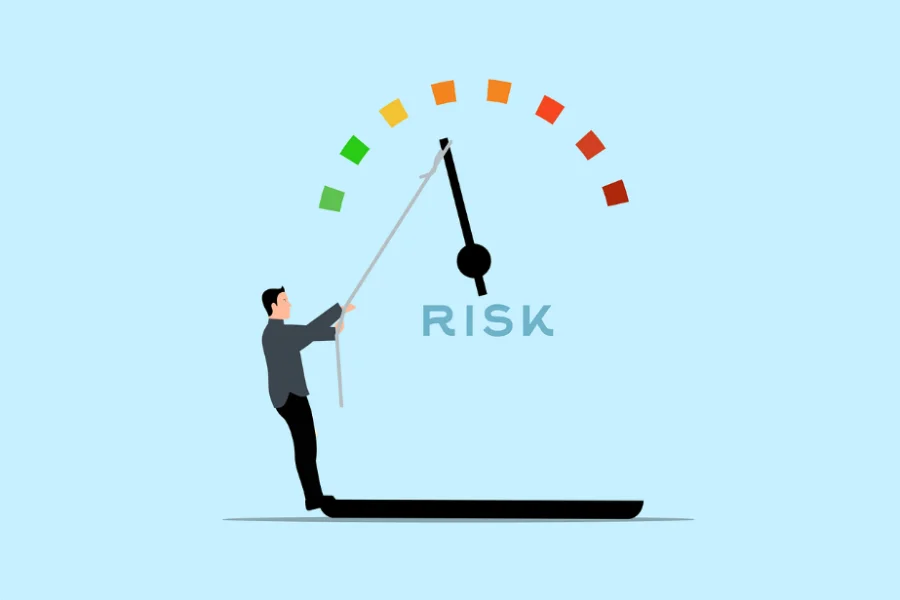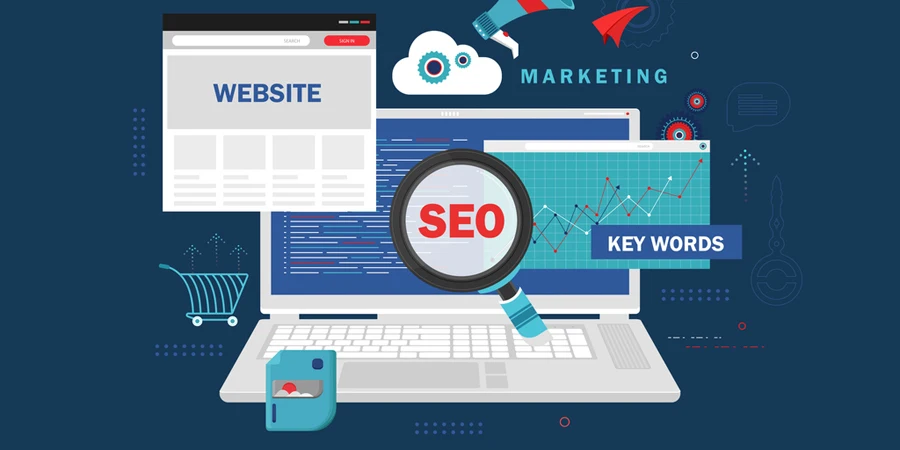Online marketplaces have become a lucrative venue for casual sellers, entrepreneurs, and business owners. These platforms provide a convenient, accessible, and cost-effective way to reach a wider customer base.
However, deciding on a platform to start an online venture can be daunting. Because it affects the selling experience and the potential revenue, choosing the right platform is a crucial decision that impacts overall success. Factors such as fees, target audience, competition, and seller tools can vary significantly across different marketplaces. It is important to evaluate these factors carefully to make sure that the one you choose allows you to meet your business goals.
If you are a beginner seller, the two leading online marketplaces to be on are Amazon and eBay. In this guide, we provide you with useful information and actionable insights that can help you navigate the complexities of these two platforms. We give you an overview of each one and a comparison of their core features. Use this guide as a valuable resource to maximize your selling potential.
Overview of Amazon and eBay
Unless you’ve lived as a hermit for decades, you’ve most likely browsed or bought something from Amazon and eBay. However, navigating these platforms as a buyer is not quite the same as when you are a seller. Here’s a quick preview of what these two offer to sellers.

Amazon
Launched as a small online bookshop in 1994, Amazon has since grown to become the world’s largest online marketplace. With a presence in multiple countries, it boasts an extensive customer base and offers a wide range of products across various categories. According to its most recent annual report, Amazon generated a revenue of $434 billion in 2022, growing almost double its annual revenue in 2019. By selling on the platform, you can leverage its colossal market reach and immense revenue potential.
Amazon accommodates two main types of sellers: individual sellers and professional sellers. Individual sellers are typically small-scale sellers who list products in limited quantities. On the other hand, professional sellers are larger businesses with a broader product range and have access to advanced selling features and tools provided by Amazon’s Seller Central platform. The type of seller account you choose will depend on your business size, goals, and selling volume.

eBay
From an online auction site for collectibles, eBay has evolved into the second most visited online marketplace, connecting millions of buyers and sellers worldwide. With a strong presence in various countries, eBay facilitates transactions across diverse product categories. At the end of 2022, eBay reported approximately 134 million active buyers and 1.7 billion live listings worldwide, highlighting its significant market presence and potential for sellers.
eBay embraces both individual sellers and business sellers. Individual sellers are often individuals or small-scale sellers who sell items occasionally or in limited quantities. Business sellers, on the other hand, are registered entities or established businesses that offer a wide range of products. eBay provides different tools and features tailored to meet the unique needs of both individual and business sellers.
Seller Requirements and Registration Process
The registration processes for both Amazon and eBay are quite easy to follow. Simply go to their website to create your seller account.
Amazon seller requirements and registration process
Amazon offers two types of seller accounts: Individual and Professional. Individual accounts are suitable for sellers who plan to sell a limited number of items and do not require advanced selling features. Professional accounts are ideal for sellers with large sales volumes. As a professional seller, you can access additional tools and benefits, such as bulk listing and advertising options. As a beginner seller, you can start with an individual account and later upgrade to a professional account as your business grows.
To register as an Amazon seller, you need to provide the following information and documentation:
- Personal information – name, address, email, and phone number
- Business information – legal entity name, tax ID
- Bank account information – bank account details and routing number
- Identity verification – government-issued ID, such as a driver’s license or passport
For detailed information on how to register as an Amazon seller, read our comprehensive guide on creating a seller account on Amazon.
eBay seller requirements and registration process
eBay offers two types of seller accounts: Individual and Registered Business. Individual accounts are suitable for occasional or low-volume sellers who primarily sell personal items. Sole proprietors, LLCs, corporations, and partnerships can sign up as Registered Business sellers. This will allow you to sell larger volumes of merchandise.
To register as an eBay seller, provide the following information:
- Personal information – full name, address, date of birth, Social Security Number, ITIN
- Business information – legal business name, business address, phone number
- Individual identification information (for eBay Stores) – “Doing Business As” (DBA) name, employer identification number
- Identity verification – driver’s license, federal or state-issued ID card, passport
- Bank account information – checking account name, bank name, account number, routing number
To pass verification, you must make sure that the name on your checking account matches the name you use on your eBay account.
Fees Comparison
Both Amazon and eBay have fees associated with selling. The fees vary depending on the type of account, fulfillment method, and other factors.
Amazon fees
- Subscription fees
If you sign up for an Individual account, you will not have to pay a monthly subscription fee. However, you would be charged $0.99 for every item that you sell on the platform. If you choose the Professional plan, you’ll have to pay $39.99 per month.
- Referral fees
Aside from the subscription fee, every item sold on Amazon is charged a referral fee. This is a percentage of the sales proceeds that ranges from 8% to 15% depending on the item category. Other items such as Amazon Device Accessories and Amazon Gift Cards have fixed referral rates from 20% to 45%.
- Fulfillment and storage fees
If you are under Fulfillment by Amazon (FBA), you have to pay additional fees to cover the pickup, storage, packing, and shipping of your products. FBA fulfillment fees vary depending on the size and weight of the items you sell. These fees can be as low as $2.47 for light parcels or as high as over $150 for bulky items. For inventory storage, expect to shell out anywhere from $0.56 to $2.40 per cubic foot depending on the season and your daily average volume.
- Other fees
Amazon may charge other fees, including long-term storage fees for items stored in Amazon’s warehouses for an extended period, advertising fees for utilizing Amazon’s advertising services for product promotion, and high-volume listing fees. Other charges you might incur include aged inventory surcharges, variable closing fees, and refund administration fees.
eBay fees
eBay charges two main types of selling fees—an insertion fee and a final value fee. If you sign up for an eBay Store, you will also need to pay a subscription fee monthly or annually. Depending on the items you are selling, you may also incur other fees and charges.
- Store subscription fees
As an eBay seller, you do not have to pay monthly subscription fees to post listings. If you’re new to the platform, you can learn the ropes without an upfront fee. As your business grows, you might want to consider creating an eBay Store. The platform offers tiered subscription packages from Starter to Enterprise. The monthly fees range from $4.95 to $2,999.95 on annual renewal. The Starter Store subscription costs $7.95 when renewed monthly.
- Insertion fees
eBay charges an insertion fee whenever you create a listing. However, all sellers are given a monthly allocation of at least 250 listings. Beyond the set allocation, insertion fees are charged per listing. For eBay sellers, this is generally $0.35 per listing. For eBay Stores, the amount varies depending on the subscription tier.

Higher subscription plans come with additional listing allocations in certain product categories. Also, items in the Business and Industrial categories are charged a $20 insertion fee regardless of the store type.
- Final value fees
eBay charges final value fees based on the total sales amount plus $0.30 per order. The total sales amount includes the price of the item, handling and shipping charges, sales tax, and other applicable fees. The final value fee is calculated based on the category of the item being sold, with different rates for each category. For most categories, this is 13.25% on the total amount up to $7,500 and 2.35% on the excess over $7,500. Others range from 3% to 15%. In March 2023, eBay removed the final value fee for all items listed by eBay.de private C2C sellers in the European Economic Area. However, the international selling fee is still pegged at 3%.
- Other fees and charges
eBay also charges optional fees for enhanced listing features and increased visibility. These fees include listing upgrades like bold or highlighted listings, promotional fees for participating in eBay’s promoted listings program, and international fees for transactions with buyers in other countries. Sellers may also incur charges for violating policies or performing subpar expectations, dispute fees for every dispute raised by a buyer, and seller currency conversion for international transactions.

Risk Assessment
When choosing which online marketplace to start your business in, you must practice due diligence and understand the risks involved and how to mitigate them. While Amazon and eBay offer immense potential for business success, they also pose challenges to sellers.
Potential Risks Amazon Sellers Face
- Competitiveness and saturation
With almost 2 million selling partners worldwide, the Amazon Marketplace has pretty intense competition among sellers, especially in popular product categories. With a large number of sellers vying for customer attention, it can be challenging to differentiate your products and stand out. Certain categories may become saturated with similar offerings, making it harder to gain visibility and sales.
- Account suspension and policy violations
Amazon has strict seller policies, and failure to adhere to these policies can result in account suspension or termination. Common policy violations include selling counterfeit or restricted products, receiving excessive negative feedback, or engaging in unethical practices. A suspended account can severely impact your revenue and reputation.
- Intellectual property infringement claims
As an Amazon seller, there’s a risk of receiving intellectual property infringement claims from trademark or copyright owners. These claims can arise if you list products that infringe upon someone else’s intellectual property rights.
Potential Risks eBay Sellers and Stores Face
- Auction format and bidding risks
eBay’s auction format introduces the risk of uncertain pricing. Depending on the bidding activity, you may not achieve the desired price for your item. Moreover, auction-style listings may attract non-serious bidders or fraudulent activity, leading to unreliable bids or non-payment.
- Trust and reputation management
Maintaining a positive reputation and building trust with buyers is essential on eBay. Negative feedback or disputes can impact your seller ratings and deter potential customers.
- Fraudulent buyers and non-payment
Like any online marketplace, eBay carries the risk of encountering fraudulent buyers who may attempt to scam sellers or engage in non-payment. Sellers should be cautious of red flags, such as unusual buyer behavior or suspicious payment methods, and take necessary precautions to mitigate the risk of fraudulent transactions.
How to Mitigate Risks When Selling on Amazon and eBay
- Thoroughly research product demand and competition before entering a specific market to assess the level of competition and potential saturation.
- Adhere to Amazon’s and eBay’s policies and guidelines to minimize the risk of account suspension or termination. Regularly review and stay updated on policy changes.
- Conduct comprehensive product research and ensure you have the necessary rights or permissions to sell a particular product to mitigate the risk of intellectual property infringement claims.
- On eBay, utilize fixed-price listings in addition to auctions to provide buyers with more buying options and reduce the risk of uncertain pricing.
- Prioritize excellent customer service, including prompt communication, accurate product descriptions, and efficient shipping, to build a positive reputation and earn buyer trust.
- Implement proper fraud prevention measures, such as verifying buyer information, using secure payment methods, and being cautious of suspicious buyer behavior.
- Stay informed about marketplace best practices, engage in seller forums or communities, and leverage seller protection programs offered by Amazon and eBay.
Potential for Revenue Growth
The revenue potential of selling on both Amazon and eBay depends on various factors, including product selection, pricing strategies, competition, seller performance, marketing efforts, and customer satisfaction. As a seller, you should continuously evaluate and optimize your strategies to maximize revenue and adapt to evolving market conditions.
Amazon Revenue Potential
- Market size and customer base
Amazon’s vast customer base provides significant revenue potential for sellers. With millions of active buyers worldwide, your products have the opportunity to reach a wide audience. Amazon’s robust infrastructure and logistics capabilities also facilitate efficient order fulfillment, ensuring a seamless buying experience for customers.
- Product selection and niche opportunities
Amazon’s extensive product catalog allows sellers to tap into various categories and find profitable niches. By conducting market research and identifying underserved or trending product segments, sellers can capitalize on niche opportunities and attract a dedicated customer base.
- Pricing strategies and buy box competition
Amazon Marketplace operates using a buy box algorithm that determines which seller’s offer is showcased prominently when multiple sellers offer the same product. Winning the buy box significantly impacts sales potential. To increase revenue, sellers must employ competitive pricing strategies, offer high-quality products, maintain excellent seller metrics, and potentially leverage Amazon’s FBA service for faster shipping and Prime eligibility.
eBay Revenue Potential
- Auction vs. fixed-price listings
eBay’s auction format can provide an exciting revenue potential, allowing sellers to generate interest and potentially achieve higher prices through competitive bidding. However, fixed-price listings on eBay can also yield consistent revenue, providing buyers the option to purchase items immediately at a set price. By utilizing both listing formats strategically, sellers can maximize revenue potential.
- Global reach and cross-border trade
eBay offers sellers the opportunity to reach a global customer base, expanding revenue potential beyond domestic markets. Through international shipping and eBay’s Global Shipping Program, sellers can engage in cross-border trade, tapping into new markets and catering to a diverse range of buyers.
- Building a loyal customer base
eBay encourages repeat business and the development of a loyal customer base. By offering exceptional customer service, providing accurate product descriptions, promptly addressing inquiries and issues, and maintaining positive seller ratings, sellers can build trust and loyalty among buyers. Repeat customers can contribute to sustained revenue and positive word-of-mouth referrals.
Choosing Between Amazon and eBay
When deciding between Amazon and eBay, it’s important to consider factors such as your individual goals, available resources, and the suitability of each platform for your products and target audience. Evaluate the following:
Factors based on individual goals and resources:
- Are you looking for a high-volume, fast-paced marketplace (Amazon) or a platform with a more diverse range of products and auction-style listings (eBay)?
- Do you have the necessary resources to manage inventory, fulfillment, and customer service demands on each platform?
- What level of control and customization do you require for your brand and listings?
Evaluating the suitability of each platform:
- Analyze the market trends and competition specific to your product category on both Amazon and eBay.
- Consider the demographics and buying behavior of the audience reached through each platform.
- Take into account the selling features, tools such as SmartRepricer and policies that align with your business model and objectives.
Practice Due Diligence in Understanding How Marketplaces Work
Keep in mind that success on either platform requires a thorough understanding of the specific dynamics and best practices associated with selling on Amazon or eBay. Utilize available seller resources such as Threecolts, stay informed about industry trends, and continually adapt your approach, so you can leverage the revenue potential of each marketplace.
As a beginner seller, it’s important to approach selling on Amazon or eBay with a mindset of learning and growth. Start small, experiment with different strategies, and adapt based on your experiences. Embrace the learning curve and utilize the valuable insights gained along the way to refine your approach and improve your business performance.
Source from Threecolts
The information set forth above is provided by Threecolts independently of Alibaba.com. Alibaba.com makes no representation and warranties as to the quality and reliability of the seller and products.








